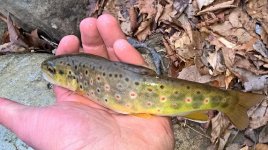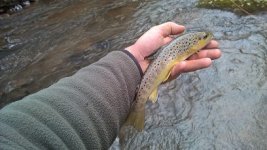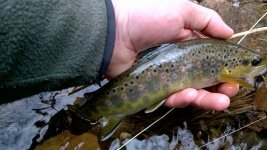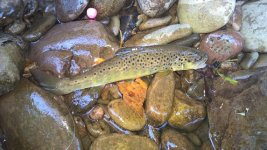For the sake of argument, how do you tell a wild brookie from a native brookie? Some water I fish surely has both.
For the sake of argument, I would answer:
- All brookies are "native". Wild or stocked. A species is what's native or non-native. Since the species is brook trout, all brook trout are native.
- Strain is a different matter. You have "heritage" strains, each native to an individual basin. You have the hatchery strain, which itself is probably a mutt of various heritage strains from all over the eastern US, selectively bred over many years in hatcheries for traits which help them survive hatcheries.
And likely most of PA's wild brookie populations are mutts, but primarily mutts of LOCAL heritage strains. There may be some influence from hatchery strains, the extent of which is TBD.
- Wild vs. stocked. All native. But adding stockies to existing wild brook trout populations stands to harm the sustainability of those population in several manners.
1. Increasing angler pressure, and harvest.
2. Direct competition for food and holding lies with existing populations, thus replacing wild fish. While being less likely to successfully reproduce than the fish they replace.
3. Potential genetic contribution to the wild populations, adding traits to the gene pool that may be helpful in a hatchery but are harmful in a stream environment.








